Catch the replay of the Apsara Conference 2020 at this link!
By AliENT
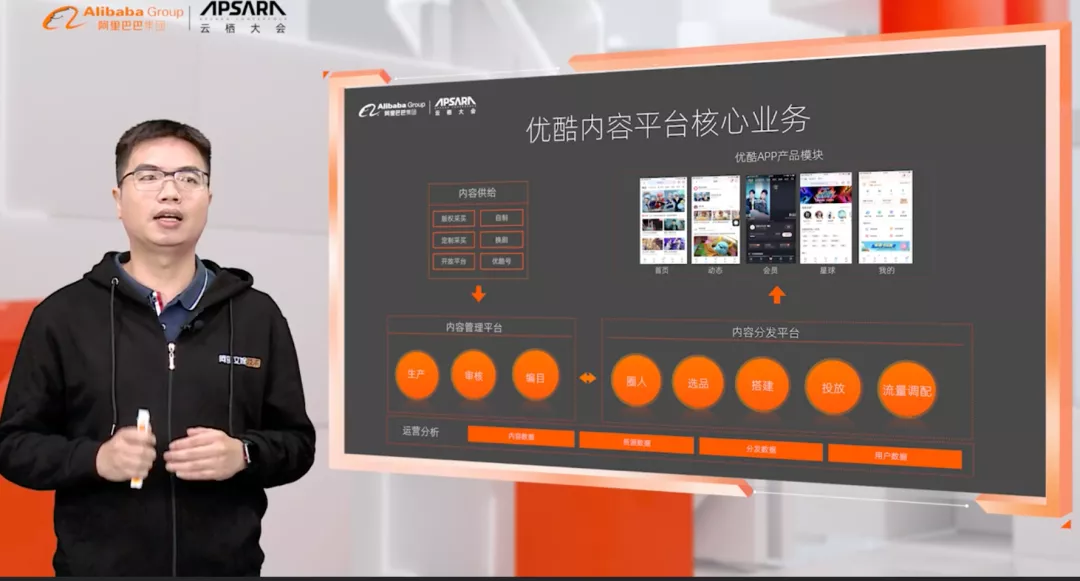
At the sub-forum on Smart Entertainment Industry Practices at the 2020 Apsara Conference, Qian Kai, Senior Technical Expert of the Youku Technology Center Content Platform, talked about Youku's digital practice in the supply chain of long video content.
The following content is a summary of his presentation.
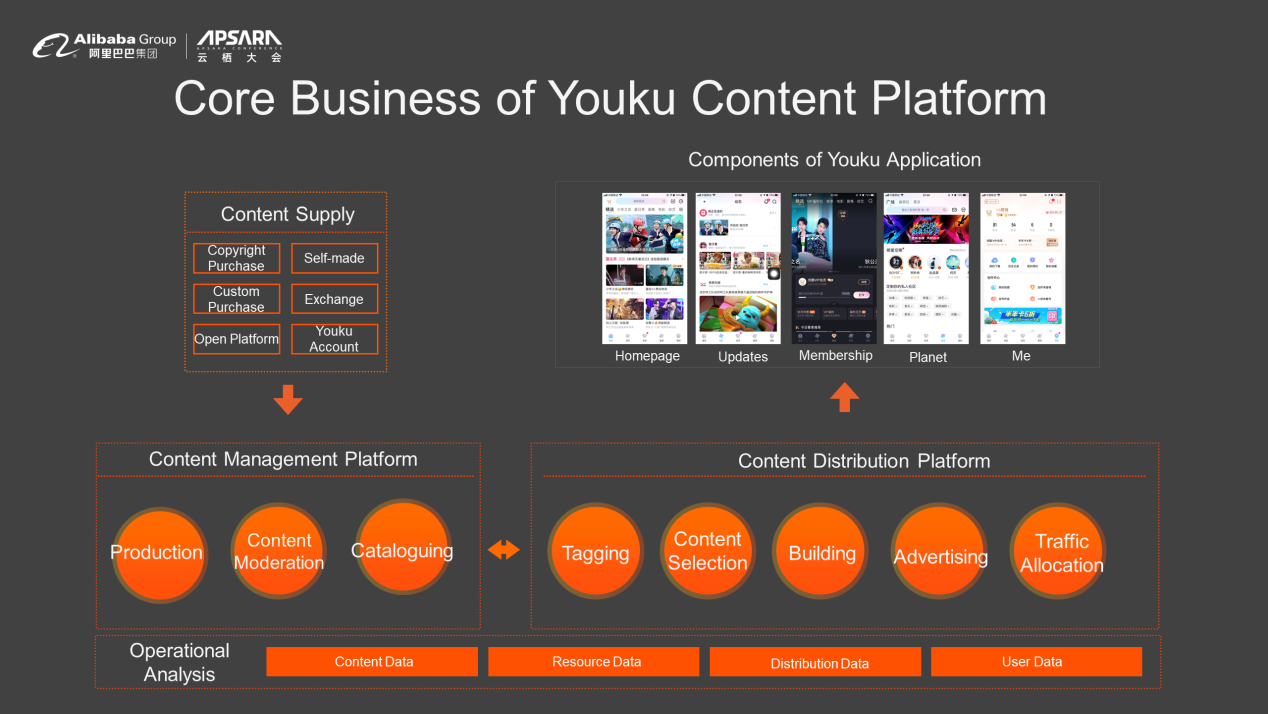
The core process of Youku's long video business is to obtain a large number of high quality purchased and self-made content and distribute them to users through platform products. As shown in the following figure, Youku's content platform consists of three modules: content supply, content management, and content delivery. Among them, content management and content delivery are relatively mature because they are more digital and intelligent and have been integrated into platform products. Comparatively speaking, the digitization construction of content supply lags behind due to the features of the content production industry. There are many difficulties to be solved, and today, I will focus on these problems.
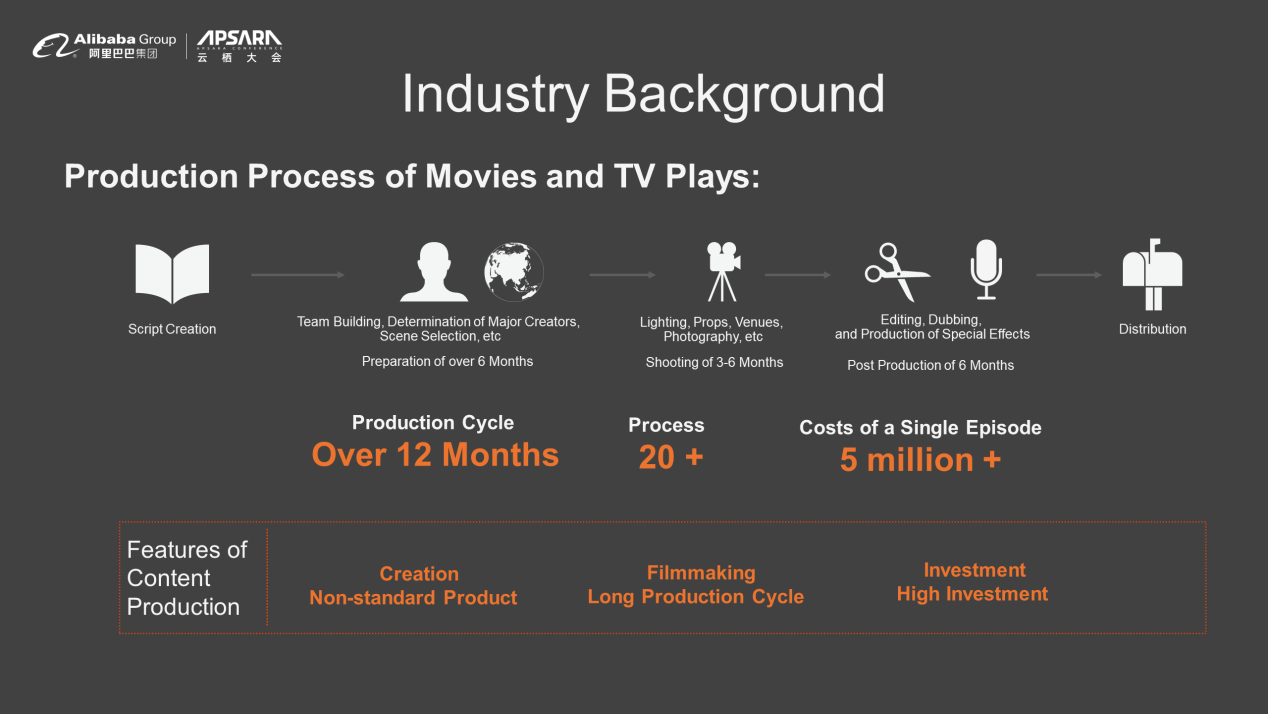
The production process of a TV show includes script creation, preparation, filming, post-production, and content release. Each step may also contain several sub-steps. For example, the preparation period includes team building, determination of major creators, and scene selection. The post-production stage includes editing, voice dubbing, and special effect production. Therefore, an excellent TV series can have a production cycle of more than one year, with over 20 processes and costs of RMB 5 million for each episode. Therefore, the characteristics of a typical content production process are very clear: non-standard products, long production cycles, and large investments for a single project.
The core challenge is still in content supply, which will frequently cause delays and result in poor quality content. According to statistics, 66% of content delivery is delayed, and 34% of content delivery is not up to standard. After reviewing these problematic projects in detail, we found the core issues.
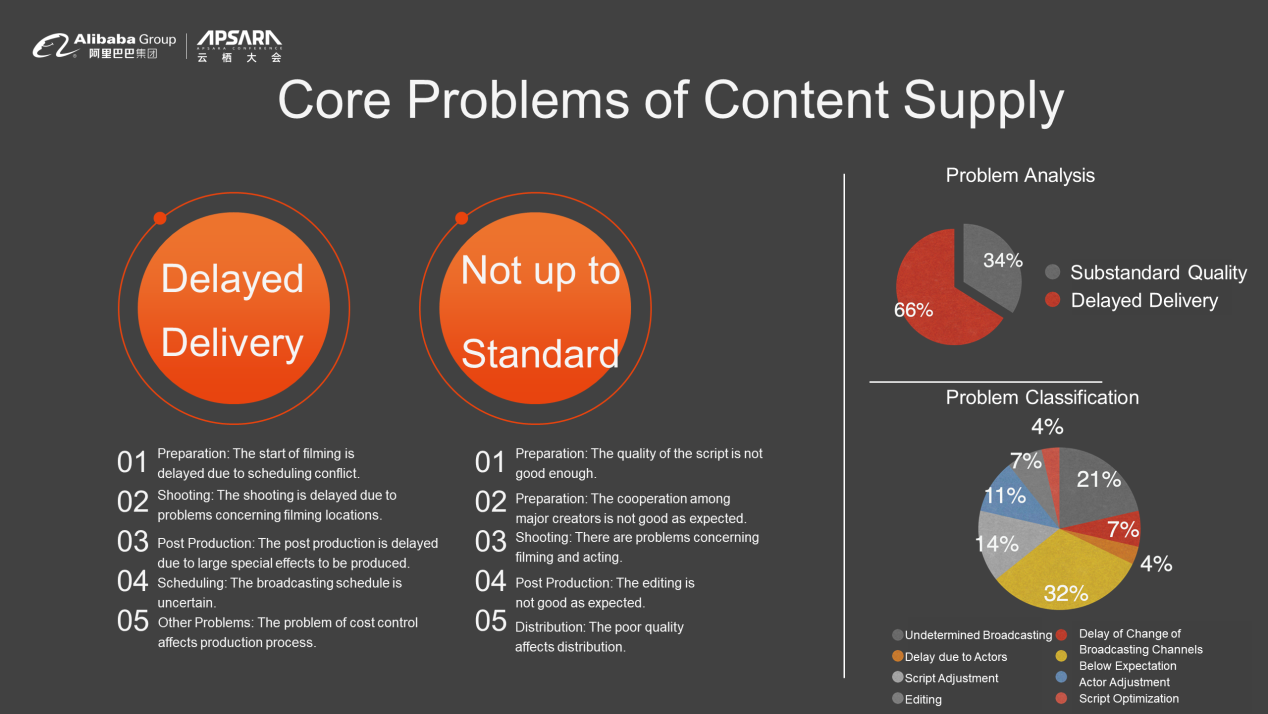
Based on the preceding problems, our solution is to build a digital supply chain system of content. After researching most digitalization solutions of traditional industries, we found that the general digital transformation of enterprises can be divided into three stages. The first stage is to structure the basic elements of the industry. The second stage is to move the business process online. The third stage is to digitize the operation strategy.
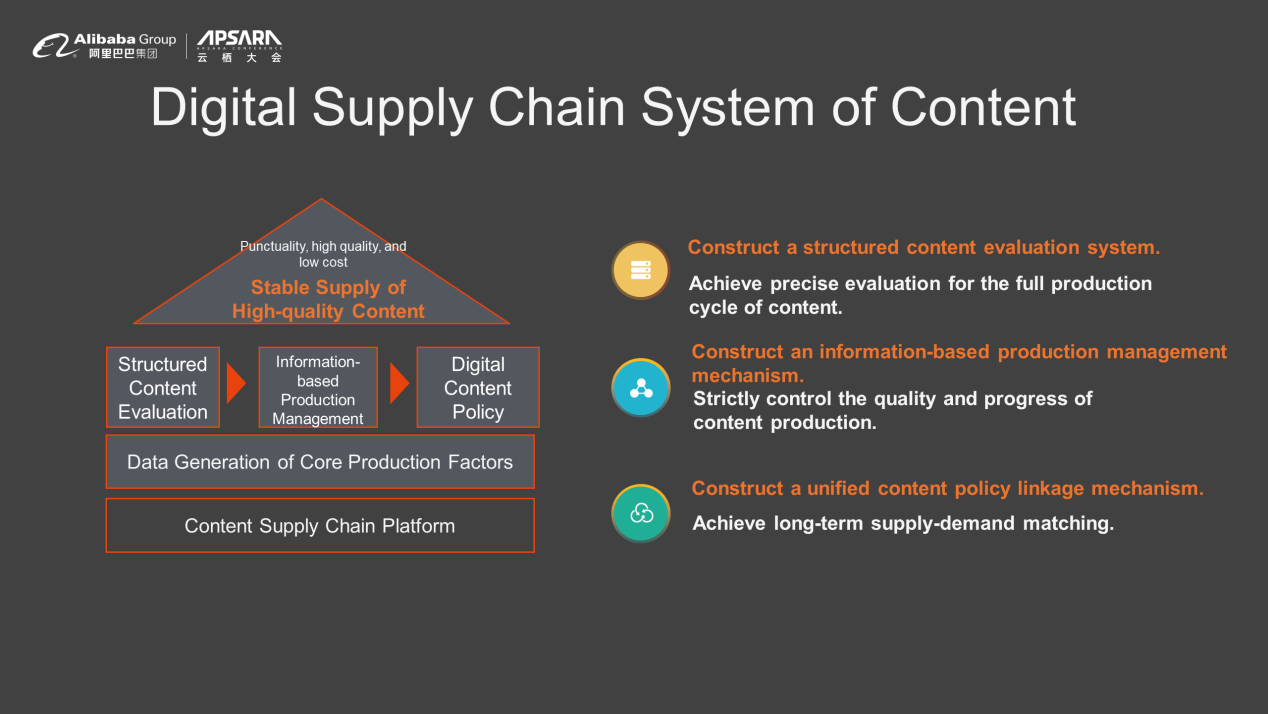
Based on this idea, we also split the digitalization solution for the supply chain of long video content into three stages.
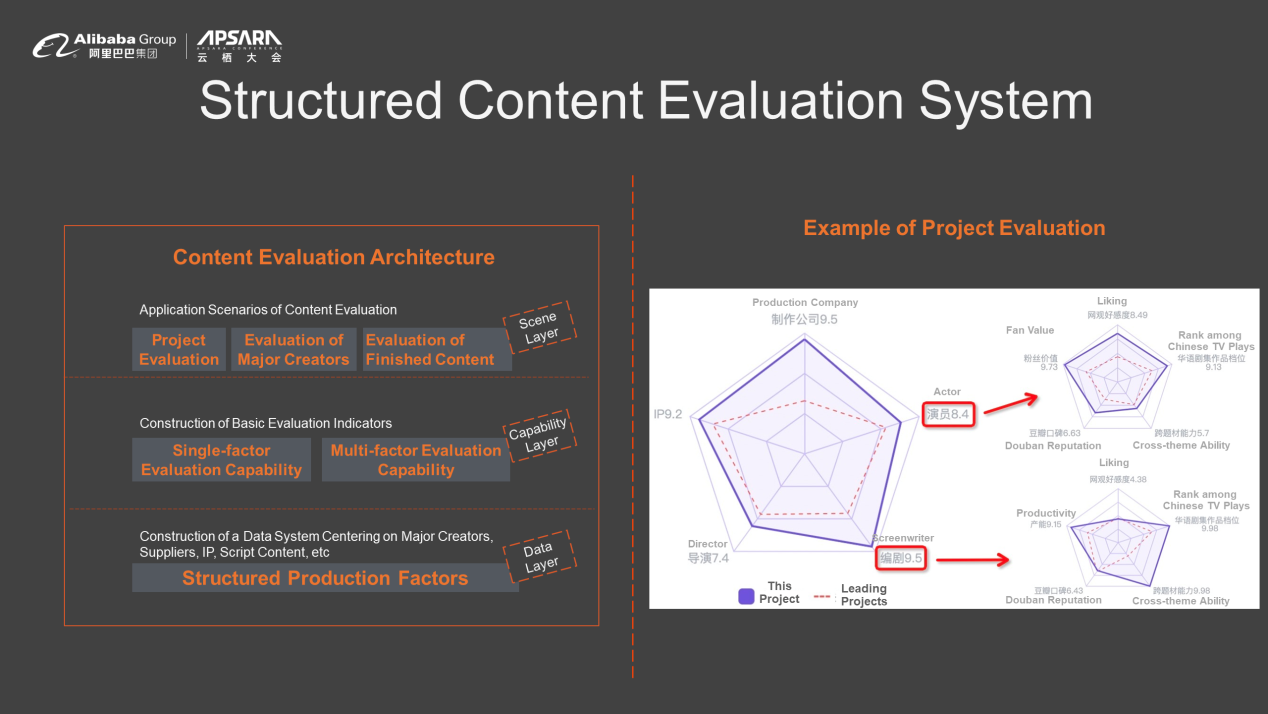
First of all, let's look at the construction idea of the structured content evaluation system. The figure on the left shows the architecture of the entire evaluation system, which is divided into three layers from the bottom to top, including the data layer, capability layer, and scenario layer. The data layer is used to produce and store the structured data of production factors. The capability layer is mainly to construct single-factor evaluation capability and multi-factor combination evaluation capability. The scenario layer is mainly about the application scenario of content evaluation. It includes project approval evaluation, evaluation for major creators, and product acceptance evaluation.
The figure on the right shows an example of a project approval evaluation. First of all, evaluate a single factor, such as an actor, a screenwriter, and a director. Here, I take the evaluation of an actor as an example. The evaluation of actors includes their attraction to an audience and fan value. With the evaluation of these elements, the overall evaluation of the project can be given. The comparative data between each element and the corresponding benchmark element will also be given. It can be used as a reference for leaders to make decisions.
Next, I will introduce the technical solution for the production of structured data. As shown in the figure on the left, the system first obtains data from a platform, processes data through ETL, knowledge standardization, knowledge integration, and knowledge reasoning, to produce structured data. The produced data includes three parts: basic factor data, content understanding data, and quantitative index data. Among them, the most important data is still the basic factor data, including the core factor data, such as directors, screenwriters, leading roles, suppliers, and IP.
The figure on the right shows an example of data production. By following the example, we can produce data related to an actor. First, capture data from various sources, clean and merge the data through ODPS, then import the data to a database after manual review. By doing so, online services can be provided through the OLAP engine. With this data production system, more than 50 billion pieces of data can be processed daily, and 30 million entities and entity relationships can be accumulated. Among them, the accuracy of entity fusion can be more than 92%.
After obtaining the structured data, we need the evaluation capability. The core is the intermediate evaluation engine, which mainly includes the following capabilities:
Based on this evaluation system, our evaluation accuracy can be over 80%.
The second step is to build an information-based production management system. The core is to make information and processes online. Therefore, we sort out the core nodes in production management, including sourcing, preliminary screening, project approval, signing, preparation, filming, post-production, review, delivery, and broadcasting. All core nodes will be put online, and a standard mechanism of information production management will be established to ensure the quality and progress of content output. Most importantly, a complete notification and warning mechanism is required to ensure that project risks can be identified and handled promptly. When the entire production management is completed online, more than 20 teams will collaborate efficiently online and more than 100 risk points will be fully monitored.
The third step is to implement a unified content policy to prevent users from paying too much for the purchased content. The core is to solve the problem of matching the supply to the demand. The solution is to establish a strategic linkage mechanism based on user needs, which can be implemented throughout all teams. Then, each team can have the same goals and direction. The supply side can be matched with the demand side and the content ROI can be improved. From end-to-end, there are four policies for users, namely the distribution policy, broadcasting policy, reserving policy, and purchasing policy.
Let me introduce the reserving policy and broadcasting policy in detail:
With these two policies, the supply and demand of the entire platform can be obtained. Short-term demand is met through short-term strategies, such as exchanging videos with other platforms and purchasing new videos. Long-term demand is met through long-term content production, such as producing self-made videos and purchasing new videos.
I have demonstrated Youku's practice in digitizing the content supply chain, including structured content evaluation, information production management, and digital content strategy. Our supply chain system has been operating for half a year, covering all TV series projects. Through the system, we have stopped more than ten risky projects and directly recovered hundreds of millions of economic losses. The system has achieved good phased results.
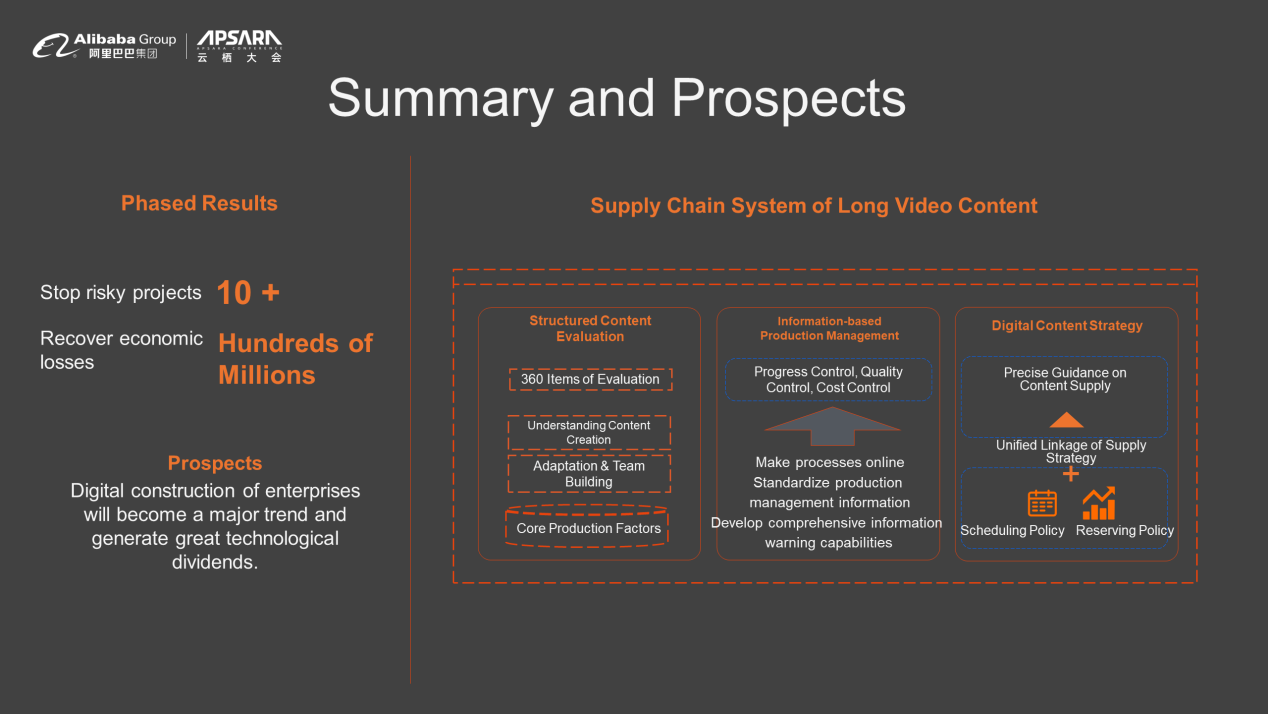
Looking into the next decade, the digital transformation of enterprises will become a major trend and bring a wave of technical benefits. At the same time, we believe that digitalization will bring changes to the upstream of content production.
How Does Youku Build a System for the Smooth Playback of HD Videos?
Perform Orchestration and Connection of Data Source in Three Minutes

2,593 posts | 792 followers
FollowAlibaba Clouder - October 27, 2020
Alibaba Clouder - October 27, 2020
Alibaba Clouder - May 4, 2021
Alibaba Clouder - October 27, 2020
Alibaba Cloud Community - May 30, 2022
Alibaba Cloud Community - June 23, 2025

2,593 posts | 792 followers
Follow Alibaba Cloud for Supply Chain
Alibaba Cloud for Supply Chain
Improve the transparency, efficiency, and sustainability of your supply chain with Alibaba Cloud
Learn More Business Mid-End Solution
Business Mid-End Solution
This solution provides you with an enterprise-level omnichannel digital platform that gets your procurement and sales onto the same platform to enhance business competitiveness.
Learn More Retail Solution
Retail Solution
Alibaba Cloud enables digital retail transformation to fuel growth and realize an omnichannel customer experience throughout the consumer journey.
Learn More Digital Marketing Solution
Digital Marketing Solution
Transform your business into a customer-centric brand while keeping marketing campaigns cost effective.
Learn MoreMore Posts by Alibaba Clouder